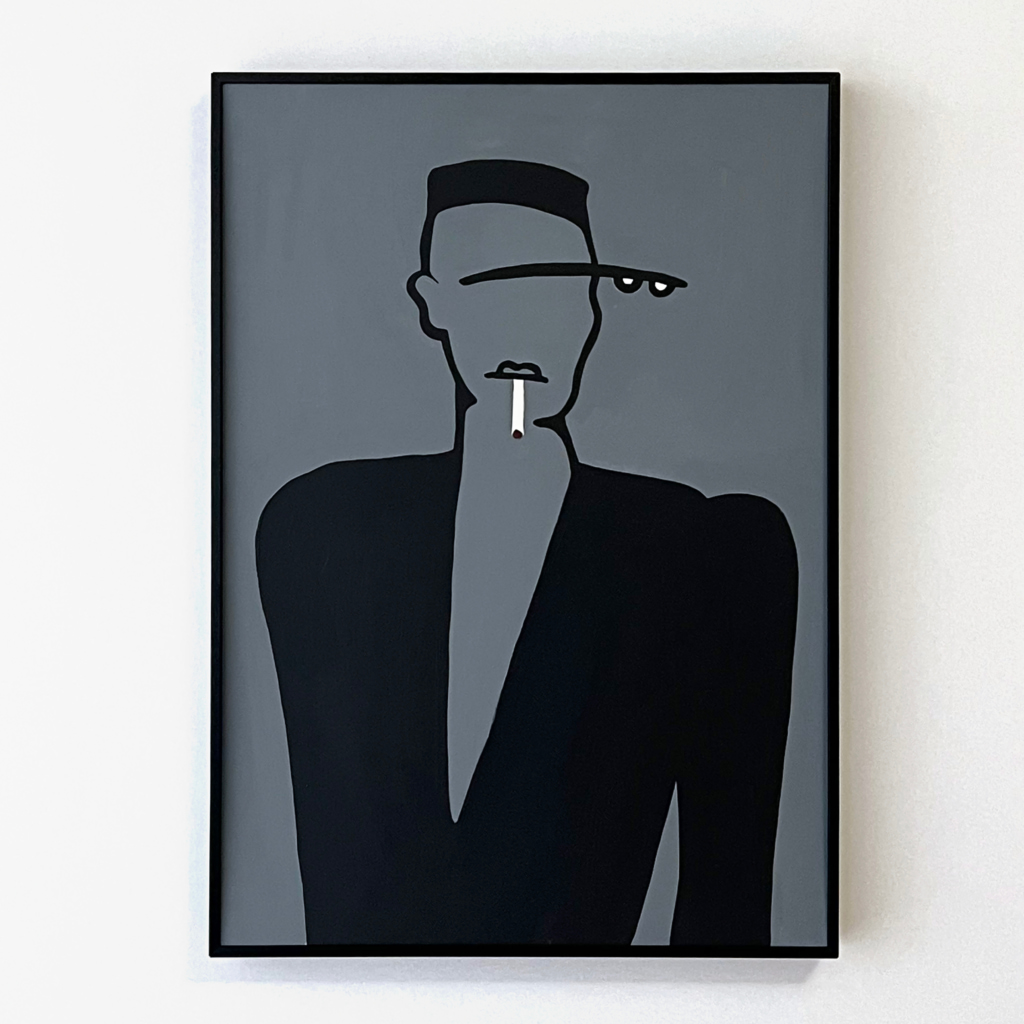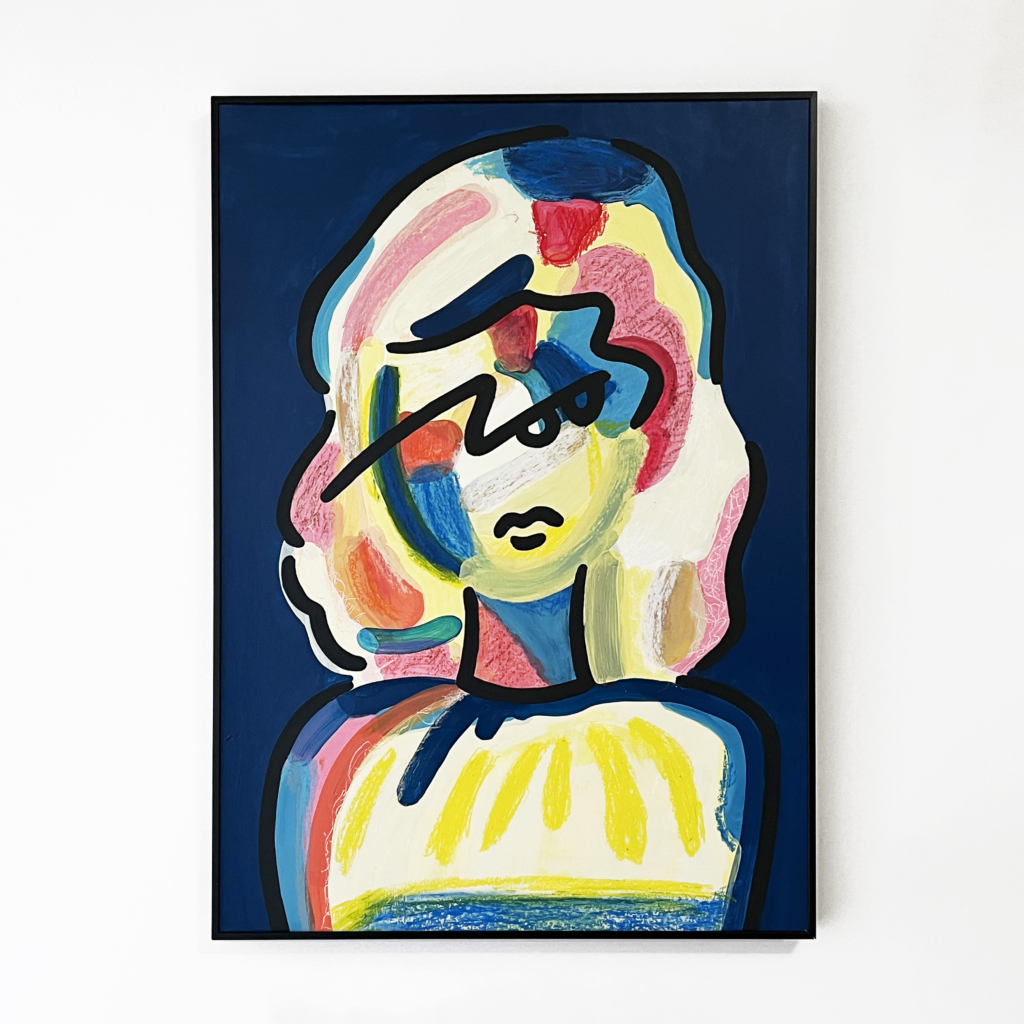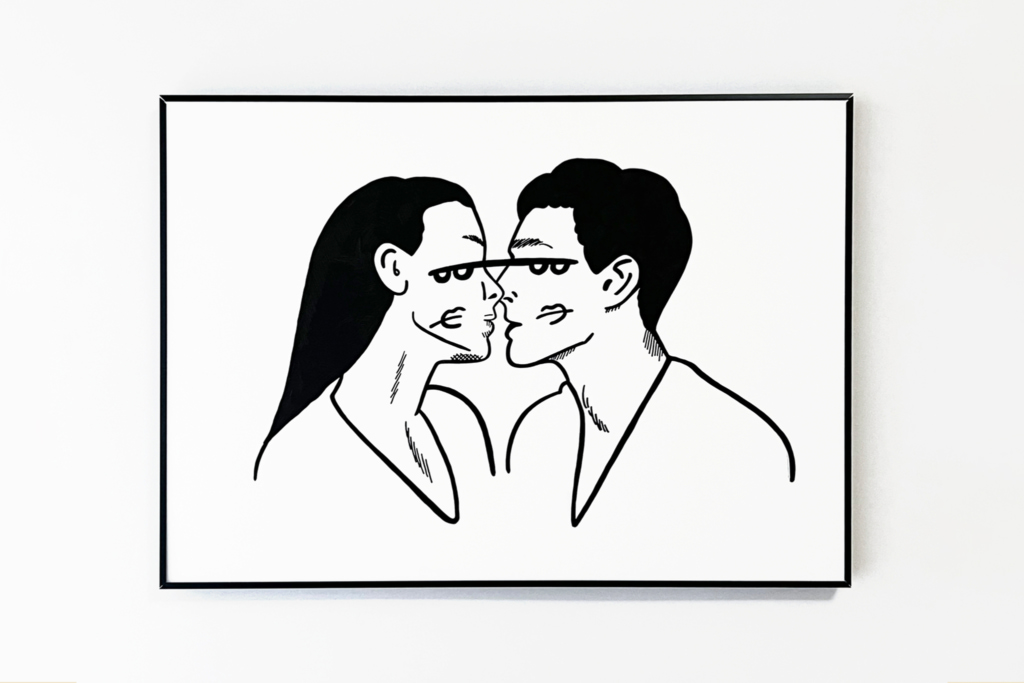When I speak with emerging Japanese artist Bonyuki over Zoom on a freezing January afternoon, it becomes apparent quite quickly that she is working within her own created world, knitted through and interlinked with several other art forms, including music and cinema.
Bonyuki, as she prefers to be known, didn’t take the most orthodox of routes to becoming one of Tokyo’s most exciting and talked about young artists. After studying for a degree in law, she attended art school for a year before finding a professional grounding in a graphic design office where she worked and learned her craft over the next eight years.
The Tokyo native tells me, “When I was in university, I really liked CD jacket artwork and I collected a lot of CDs. I learned about a lot of artists, especially graphic designers, and so I decided after doing law to go to graphic design school. It was interesting to learn about trends when working as a graphic designer. I also worked on projects with Lumine, Parco and other large retail companies.”

Striking aspects of her oeuvre include the humor, slight irreverence and pop culture references. Grace Jones, movies including Risa Bramon Garcia’s 200 Cigarettes, Jim Jarmusch’s acclaimed Night on Earth and Coffee and Cigarettes, the films of Jean-Luc Godard, French modern classic Betty Blue and a doffed cap to pop art and its use of vibrant and often gaudy colors. However, it’s in the music of super cult 1960s American band The Shaggs where Bonyuki felt the genesis of her artistic awakening.
“My first inspiration was a band called The Shaggs,” she says. “Guitar, bass and drums. That’s all. And I was inspired by their inclusivity and quietly appearing style. I liked their faces and mannerisms. So, I got my own style from them.”
Anyone with a passing interest in American indie music will know The Shaggs, a band derided as one of the worst of all time or, according to Nirvana front man Kurt Cobain, one of the best groups of all time. He went on record as saying, “They were all sisters, with their evil uncle making plans for them. I heard this one live song — a Carpenters song, maybe? — where they must have been playing a day center, and the screams in the background are louder than the music.”
There’s something alarming about Bonyuki’s work too, the smoking, the affected indifference, the distorted tongues, faces and mouths which taps into the disaffected ‘fuck you’ of the indie sensibility and overarching aesthetic.

Bonyuki’s work first came to prominence on Instagram and from that, roughly two years ago, she became a freelance artist. Since then, she has exhibited her work at Isetan, Mitsukoshi, Takashimaya and Shibuya’s hipper than hip Trunk Hotel.
“I want to explore the question ‘why’ in my work,” says Bonyuki. “Why are the eyes popping out, for example? I talked to some of my clients at the exhibitions and their interpretations of my work are completely different from person to person. Some people see them in a philosophical way and others sympathize with them and relate to their own personal experiences. This interests me and also inspires me too.”
Bonyuki, who learned English on an exchange program in Seattle, is one of a new crop of Japanese artists who aren’t content just to show and dissipate in their home country. A global perspective and love and admiration of foreign art, cinema and music sees her looking westward.
She says, “This year I’ll be exhibiting in Taiwan and then I have a show at another department store in Japan again. And I’ll be collaborating with some apparel brands. The Taiwan exhibition in May is my first time to show overseas, so it’s really exciting for me.”
Her desire for international recognition sees the emerging artist with one main desire. Her answer to my question, “What’s your aim?” is simple and direct. “That’s easy for me. I want people all over the world to see my work. I want to connect with many people through my art and to hold exhibitions in various countries.”








